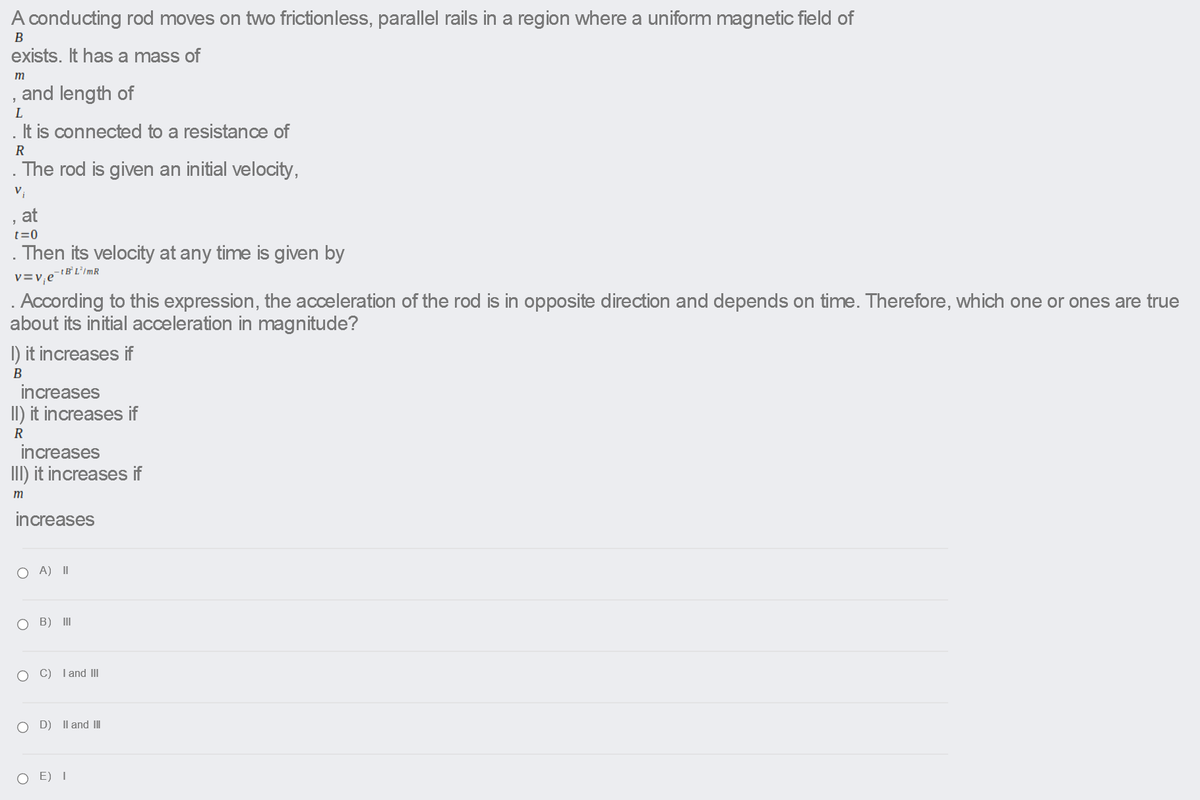A conducting rod moves on two frictionless, parallel rails in a region where a uniform magnetic field of В exists. It has a mass of m and length of L . It is connected to a resistance of R . The rod is given an initial velocity, , at t=0 Then its velocity at any time is given by -tB L'ImR v=v,e . According to this expression, the acceleration of the rod is in opposite direction and depends on time. Therefore, which one or ones are true about its initial acceleration in magnitude? I) it increases if B increases II) it increases if R increases III) it increases if increases O A) II O B) II C) I and II O D) Il and II O E) I
Ampere Circuital Law
Ampere's Law states that "for any closed loop path, the sum of the length elements times the magnetic field in the direction of the length element is equal to the permeability times the electric current enclosed in the loop.”
Current Density
To design the electrical and electronic system, the current density is an important factor. The designer current level is the factor on which the circuit performance depends and with the help of the dimensions of the conducting current the current density is then determined. For instance, despite the lower current demanded by smaller devices as integrated circuits are reduced in size, there is a type of trend in achieving the higher device number in even smaller chip areas. The current density is increased in this region at higher frequencies because the conducting region in a wire becomes confined and this is known as the skin effect. The consequences increase as the current densities become higher.

Step by step
Solved in 2 steps with 1 images









